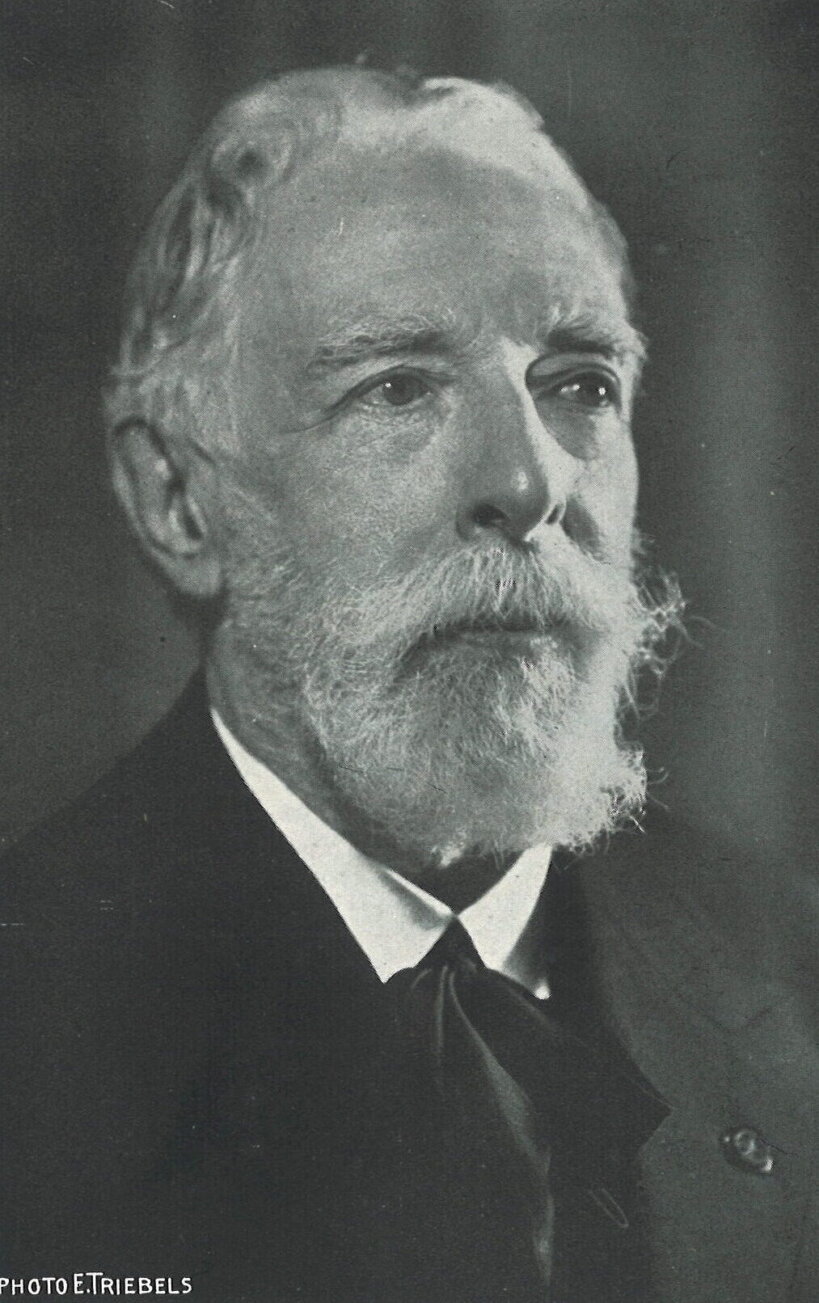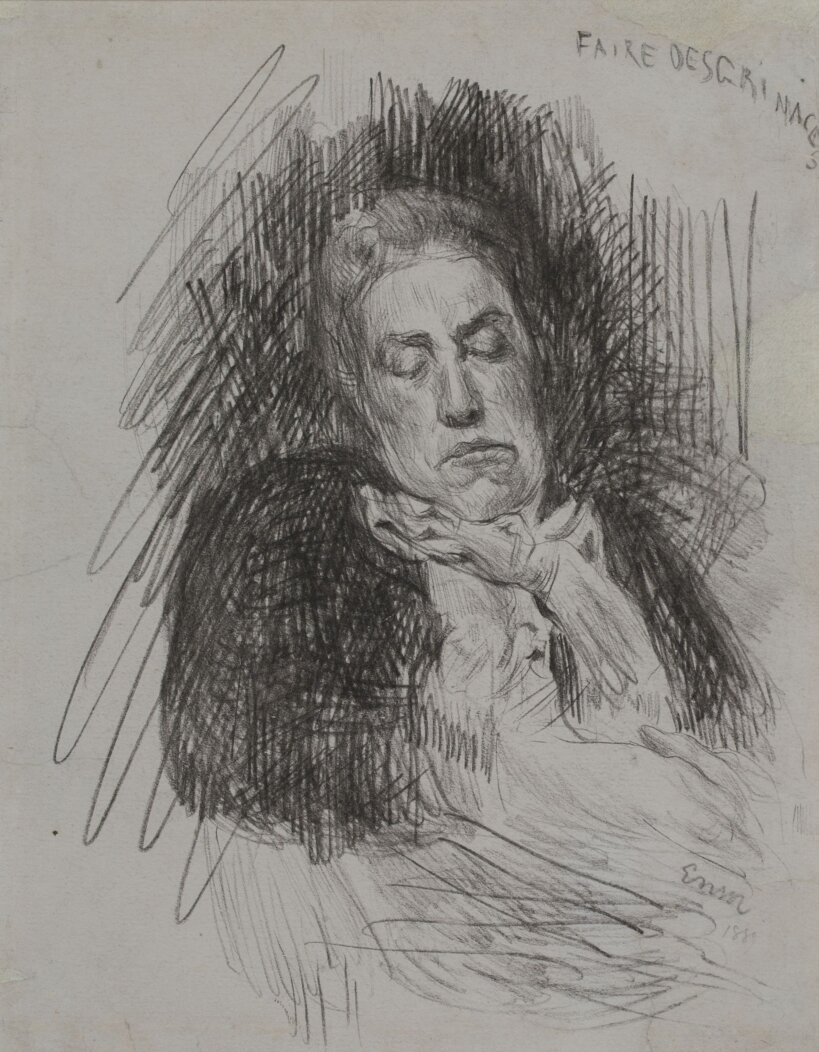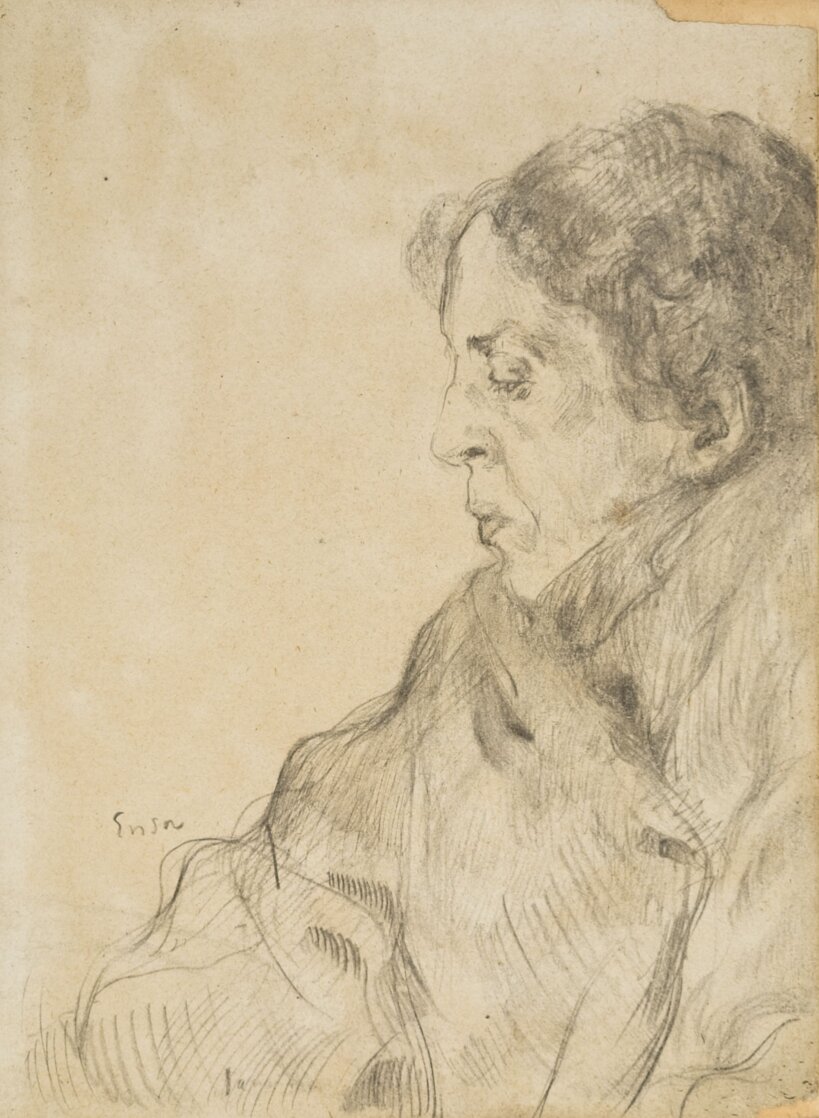Ensor’s birthday was actually on 13 April, but the milestone wasn’t celebrated in his home city until the summer. Even at 75 he had lost none of his roguish appeal, and he was undoubtedly just as skilled at playing to an audience as ever before. The event on 18 August was covered extensively in the daily papers. According to reports, the day began with a morning reception in his workshop, where two bronze memorials were revealed, followed by an afternoon celebration in Oostend’s city hall.
Besides the usual speeches by officials of note, Ensor also spoke at both events (La Nation belge, 19 August 1935) and both of his speeches were printed in the brochure that Studio had published especially for the occasion.
The ‘humorous talk’ that he gave in the morning is the one in the manuscript given to the Friends of the Museum, and he presented it in an unmistakable Oostend dialect (according to the decided reports of De Standaard, De Gentenaar and Gazet van Antwerpen of 19 August 1935). His qualities as a speaker were as evident as his skills as a painter, illustrator and graphic artist - which he referred to as me schelder tole, or ‘my painterly language’. And just as skilfully as he employed that painterly language, so also was he a particularly creative painter of words. Effortlessly, he produced an intermediary language through which he was able to speak to his fellow Belgians in the country’s two native languages. The brochure included two different French versions, both incorporating many words of his own invention.
After the introduction a series of Oostend residents were mentioned; even though only their first names were spoken, those present would probably have known who they were. Ensor also spoke of his mother Maria Catharine (‘Trinette’), who had died in 1915, and her sister Marie (‘Mimi’) Haegheman who died in 1916. Theirs would likely have been familiar faces during the tourist season, and they were known as honest gentlewomen of good standing in the city, or as Ensor put it: ‘work slaves in the summer and sleepyheads in the winter’, ‘they were upright and decent citizens with golden reputations.’ His choice of ‘golden’ rather than ‘good’ was probably deliberate. As long as they lived, the two women were a constant source of aid and comfort for Ensor, and so worth their weight in gold for the rather solitary artist - despite the rigid bourgeois environment in which they lived and his on merciless depictions of them in his art.
Next, Ensor described a recent walk in Oostende and his meeting with two ‘little old Oostende ladies’, during which one said to the other ‘lookie here’, upon meeting ‘a great painter’. Ensor not only found this amusing: being recognised in his home city would have also been very flattering. Even so, residents could catch a glimpse of him most days.
Oostende was with a doubt the city to which his heart belonged above all others. ‘I put our Oostende above everything; I will never leave it,’ he said. Until his last breath, when ‘my last words will be “Oostende, dear blossom of colour, heaven of the sea.’ Ensor closed the speech with an ode to the city: ‘Long live Oostende.’
Notable figures in attendance that day included writer Karel Jonckheere (1906-1993), like Ensor another native of Oostende, and the Parisian lawyer Albert Croquez (1886-1949), who published a catalogue of Ensor’s print oeuvre in 1935. Interestingly, several newspapers reported that ‘artists came from across the continent’ for the event, but sadly did not note their names.
After 1935 the text of the speech remained in the collection of heirs of Imprimerie Smissaert, the Oostende printer’s shop in the Sint-Sebastiaanstraat that produced the brochure. The donation to the Friends of the Museum of this exceptional document - which not only illustrates Ensor’s humour and character but is also a useful historical addition to the archive - adds an extra dimension to the celebration of Ensor in 2024. What makes it even more special is that we can add Ensor’s speech marking his 75th birthday to our national heritage collection during celebrations of the 75th anniversary of his death. In recognition of this, it will be displayed during the ‘Among Friends’ exhibition in the gallery focusing on print collectors (gallery I).





